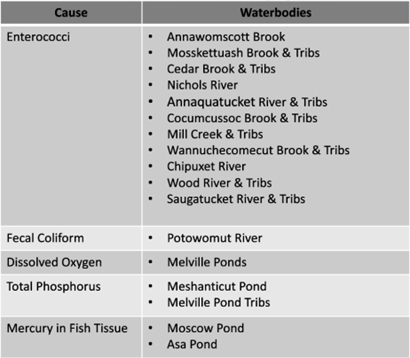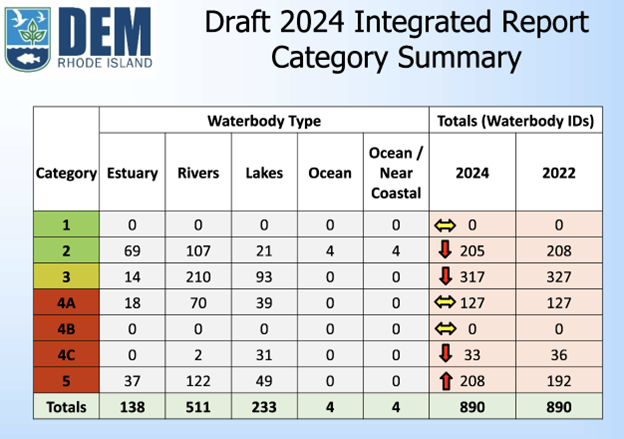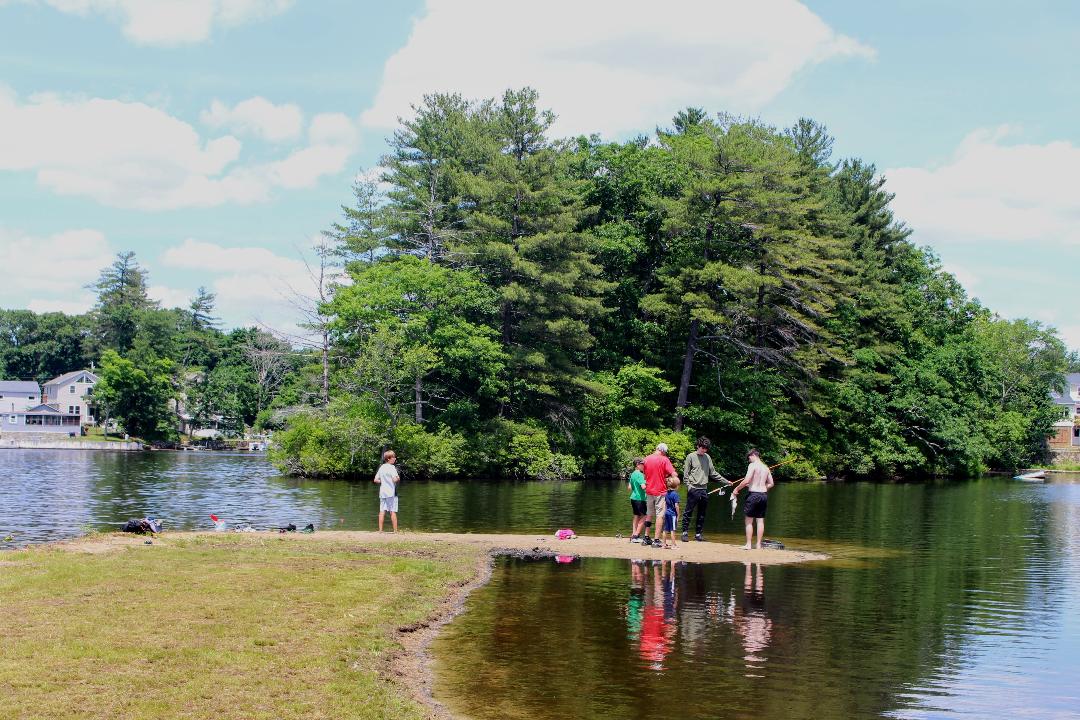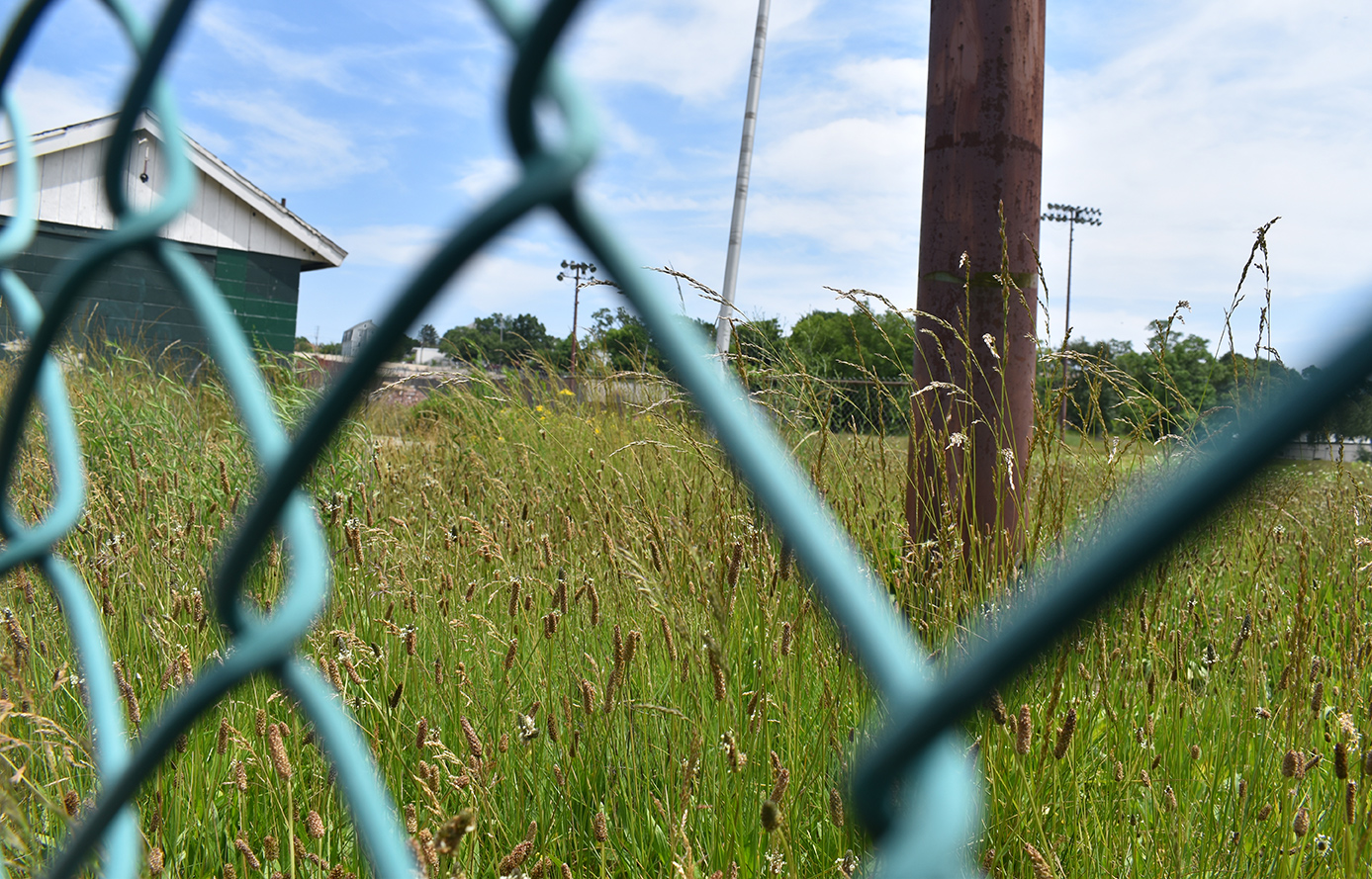16 Waterbodies Added to R.I.’s Impaired List
May 24, 2024
PROVIDENCE — The Rhode Island Department of Environmental Management added 16 waterbodies to its draft impaired waters list that trigger Clean Water Act regulations requiring further study and mitigation plans for each newly added pond, lake, river, or estuary.
The required studies and mitigation plans are called Total Maximum Daily Loads (TMDLs) and aim to identify pollution sources, calculate safe testing levels for the waterbody, and then create implementation plans to reduce contamination to those safe levels.
Any waterbody that needs a TMDL is considered a Category 5 on Rhode Island’s impaired water list, because its high level of contamination makes it no longer safe to perform its state-designated uses, such as recreation or fishing.
The 2024 draft includes 208 waterbodies in that category, up from 192 in 2022, the last time the department put together a list.
The state monitors 890 waterbodies, meaning that 23% are impaired because of contaminants, according to the draft report.
The 16 newly listed Category 5 waters were contaminated with enterococci, fecal coliform, phosphorus, and dissolved oxygen, which could be caused by wastewater and stormwater issues.
Moscow Pond in Hopkinton and Asa Pond in South Kingstown were added to the list because mercury was found in the tissue of fish from the ponds.

The other waterbodies fall into one of several other categories:
Category 1 waters support all their uses; there aren’t any Rhode Island waters on this list.
Category 2 waters meet some of their designated uses, but the state doesn’t have sufficient data on every use. About a quarter of the state’s monitored waters fall into this category and not Category 1, because DEM doesn’t yet have sufficient fish tissue testing, something the agency is working toward, DEM environmental scientist Colin Millar said during a recent virtual meeting about the draft report.
Category 3 waters, the largest category encompassing 317 monitored waterbodies, don’t have enough or any data to evaluate whether they can sustain their uses.
Category 4 is broken up into three subcategories: 4A waters have an approved TMDLs; 4B waters are being addressed by other plans (Rhode Island’s list doesn’t have any waters in this category); and 4C waters are impaired, but not by a pollutant. Often these types of impaired waters have invasive species issues.

DEM has only released a draft of the impaired waters list. Members of the public can submit comments on the list by sending emails to Millar ([email protected]) by June 10.




Why did you not add another column to the spreadsheet of water bodies and identify the municipality in which each is located?
Click on the link in article, “draft impaired waters list” to view towns.